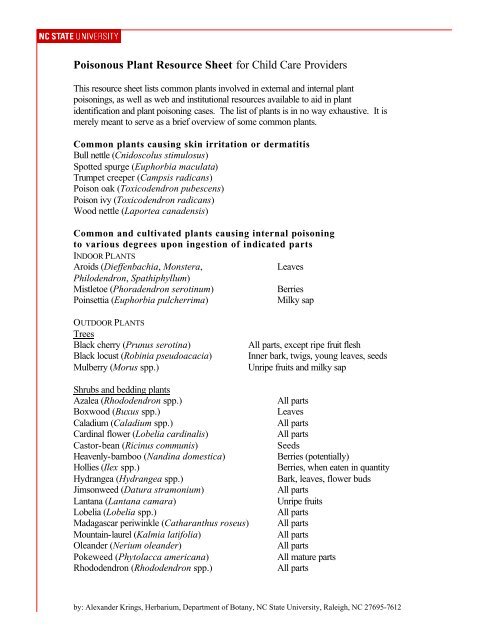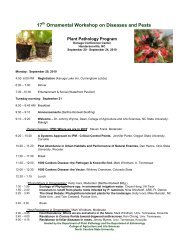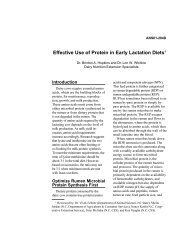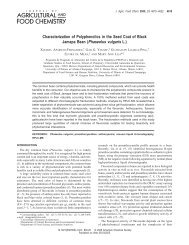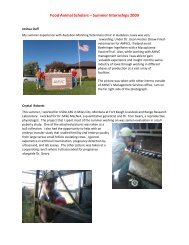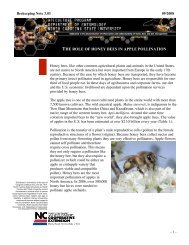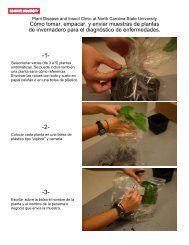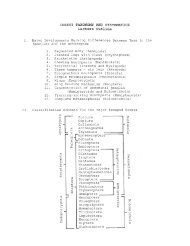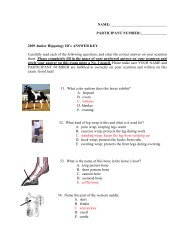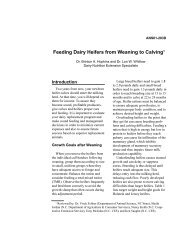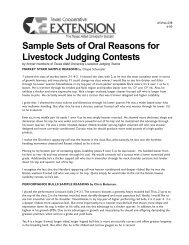Poisonous Plant Resource Sheet for Child Care Providers
Poisonous Plant Resource Sheet for Child Care Providers
Poisonous Plant Resource Sheet for Child Care Providers
You also want an ePaper? Increase the reach of your titles
YUMPU automatically turns print PDFs into web optimized ePapers that Google loves.
<strong>Poisonous</strong> <strong>Plant</strong> <strong>Resource</strong> <strong>Sheet</strong> <strong>for</strong> <strong>Child</strong> <strong>Care</strong> <strong>Providers</strong><br />
This resource sheet lists common plants involved in external and internal plant<br />
poisonings, as well as web and institutional resources available to aid in plant<br />
identification and plant poisoning cases. The list of plants is in no way exhaustive. It is<br />
merely meant to serve as a brief overview of some common plants.<br />
Common plants causing skin irritation or dermatitis<br />
Bull nettle (Cnidoscolus stimulosus)<br />
Spotted spurge (Euphorbia maculata)<br />
Trumpet creeper (Campsis radicans)<br />
Poison oak (Toxicodendron pubescens)<br />
Poison ivy (Toxicodendron radicans)<br />
Wood nettle (Laportea canadensis)<br />
Common and cultivated plants causing internal poisoning<br />
to various degrees upon ingestion of indicated parts<br />
INDOOR PLANTS<br />
Aroids (Dieffenbachia, Monstera, Leaves<br />
Philodendron, Spathiphyllum)<br />
Mistletoe (Phoradendron serotinum) Berries<br />
Poinsettia (Euphorbia pulcherrima) Milky sap<br />
OUTDOOR PLANTS<br />
Trees<br />
Black cherry (Prunus serotina) All parts, except ripe fruit flesh<br />
Black locust (Robinia pseudoacacia) Inner bark, twigs, young leaves, seeds<br />
Mulberry (Morus spp.) Unripe fruits and milky sap<br />
Shrubs and bedding plants<br />
Azalea (Rhododendron spp.) All parts<br />
Boxwood (Buxus spp.) Leaves<br />
Caladium (Caladium spp.) All parts<br />
Cardinal flower (Lobelia cardinalis) All parts<br />
Castor-bean (Ricinus communis) Seeds<br />
Heavenly-bamboo (Nandina domestica) Berries (potentially)<br />
Hollies (Ilex spp.) Berries, when eaten in quantity<br />
Hydrangea (Hydrangea spp.) Bark, leaves, flower buds<br />
Jimsonweed (Datura stramonium) All parts<br />
Lantana (Lantana camara) Unripe fruits<br />
Lobelia (Lobelia spp.) All parts<br />
Madagascar periwinkle (Catharanthus roseus) All parts<br />
Mountain-laurel (Kalmia latifolia) All parts<br />
Oleander (Nerium oleander) All parts<br />
Pokeweed (Phytolacca americana) All mature parts<br />
Rhododendron (Rhododendron spp.) All parts<br />
by: Alexander Krings, Herbarium, Department of Botany, NC State University, Raleigh, NC 27695-7612
Sheep-laurel, Lamb-kill (Kalmia spp.) All parts<br />
Tomato (Lycopersicon esculentum) Stems and leaves<br />
Vines<br />
English ivy (Hedera helix) All parts<br />
Hyacinth bean (Dolichos lablab) Pods and seeds<br />
Peppervine (Ampelopsis arborea) Unknown, caution with berries<br />
Porcelain berry (Ampelopsis brevipedunculata) Unknown, caution with berries<br />
Sweet Pea (Lathyrus spp.) Seeds<br />
Vetchling (Lathyrus spp.) Seeds<br />
Virginia creeper (Parthenocissus quinquefolia) Berries<br />
Yellow Allamanda (Allamanda cathartica) All parts<br />
Yellow jessamine (Gelsemium sempervirens) All parts<br />
Wisteria (Wisteria spp.) Seeds<br />
How to avoid plant poisoning<br />
1. Learn to recognize and name the dangerous plants around your facility.<br />
2. Keep plants and plant parts away from infants and children<br />
3. Teach children to keep unknown plants and plant parts out of their mouths<br />
4. Teach children to recognize poison-ivy and other dermatitis-causing plants<br />
5. Do not allow children to make “tea” from leaves or suck nectar from flowers<br />
6. Do not rely on pets, birds, squirrels, or other animals to indicate non-poisonous plants.<br />
7. Label garden seeds and bulbs and store out of reach of children<br />
8. Be pro-active. If unsure of whether or not a plant around your facility is poisonous,<br />
mail a sample to the NC State University Herbarium <strong>for</strong> identification:<br />
Herbarium, Department of Botany<br />
NC State University<br />
Raleigh, NC 27695-7612<br />
Additional in<strong>for</strong>mation, including how to prepare specimens and which <strong>for</strong>ms should be<br />
filled out, is available online: http://www.cals.ncsu.edu/botany/ncsc/identification.htm<br />
In case of emergencies<br />
Call a physician or the Carolina’s Poison Center (1-800-848-6946) immediately!<br />
Be prepared to provide the following in<strong>for</strong>mation:<br />
1. Name of the plant, if known<br />
2. What parts and how much were eaten<br />
3. How long ago was it eaten<br />
4. Age of individual<br />
5. Symptoms observed<br />
6. A good description of the plant. Save the specimen <strong>for</strong> identification by<br />
a plant taxonomist at a local university (e.g., NCSU Herbarium Curator @ 919-515-2700).<br />
Online poisonous plant resources from NC State University<br />
1. http://www.ces.ncsu.edu/depts/hort/consumer/poison/poison.htm<br />
2. http://www.cals.ncsu.edu/botany/ncsc/Poisonplants/index.htm<br />
by: Alexander Krings, Herbarium, Department of Botany, NC State University, Raleigh, NC 27695-7612


